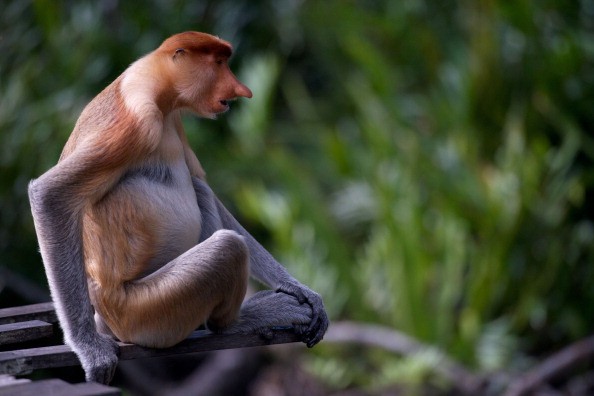Researchers have discovered how animals evolved protruding, pliable noses thanks to the recent study of bones and animal embryos.
The study adds to the understanding of the origins of mammals' acute sense of smell and opens the door to new animal models, such as chickens or frogs, which are often employed in lab trials to explore face development problems like cleft palate.
The classic scientific view of face evolution is that mammalian and reptilian jaws evolve in a similar manner. Despite the fact that animals have a distinct nose, the development of this structure is uncertain.

The number of upper jaw bones in fossils of four-legged animals, including reptile and mammalian predecessors, is the same. It's easy to assume that all bones are the same, but scientists can now study embryos and monitor cellular growth to learn a lot more about them, Hiroki Higashiyama, a postdoctoral researcher at the University of Tokyo Graduate School of Medicine who studies evolutionary development, explained the findings.
The study, which was just published in the Proceedings of the National Academy of Sciences is the first to use cellular investigations to compare several embryos from different species to explore the development of face form.
Professor Hiroki Kurihara's team devised a mean to study face development in embryos of several species, including birds (chickens), reptiles (geckos), and mammals. They focused on the facial prominences in embryos, a collection of cells that generate the anatomical characteristics of the face.
Researchers used staining to follow the cells as they migrated and expanded. The frontonasal prominence is a collection of cells that generates the jaw point in reptiles but becomes the protruding nose in mammals. Jaw points in mammals are formed by a distinct set of cells known as the maxillary prominence.
Analysis of fossil specimens
Researchers analyzed fossil specimens with this fresh approach gained from their cellular experiment.
The premaxilla, the bone at the point of reptiles' upper jaw, got smaller and migrated higher as species' ancestors collected more physical and genetic differences, while the septomaxilla, the bone behind it, became bigger and traveled forwards to become the jaw tip of mammals.
The face bones of egg-laying mammals such as the Australian platypus and echidna give further live instances of transitional bone structures from the evolutionarily older reptile model to the more recently acquired mammalian form, according to the researchers.
The capacity to "sniff" is due to the separation of the nose and jaw, which allows animals to use muscles to flare the nostrils and profoundly inhale aromas from the surroundings. This discovery represents a watershed moment in the development of human and other mammals' motile noses which contribute to mammals' very acute sense of smell.
Evolution of more complex brains
Having the ability to distinguish and recognize so many scents may have aided mammals in developing bigger, more complex brains than their progenitor species.
Physical evidence of the evolutionary change in premaxilla and septomaxilla arrangement has been found in recent study, but diiferent studies will be required to determine the genetic underpinnings.
Mice are the only animal model presently used to examine cleft lip and palate. Mice are costly to keep and grow slowly, thus other animal models that experience development problems might be useful for study.
Related Article : How Can Some Mammals Breathe Through Their Bottom?
For more news, updates about mammals and similar topics don't forget to follow Nature World News!
© 2025 NatureWorldNews.com All rights reserved. Do not reproduce without permission.





